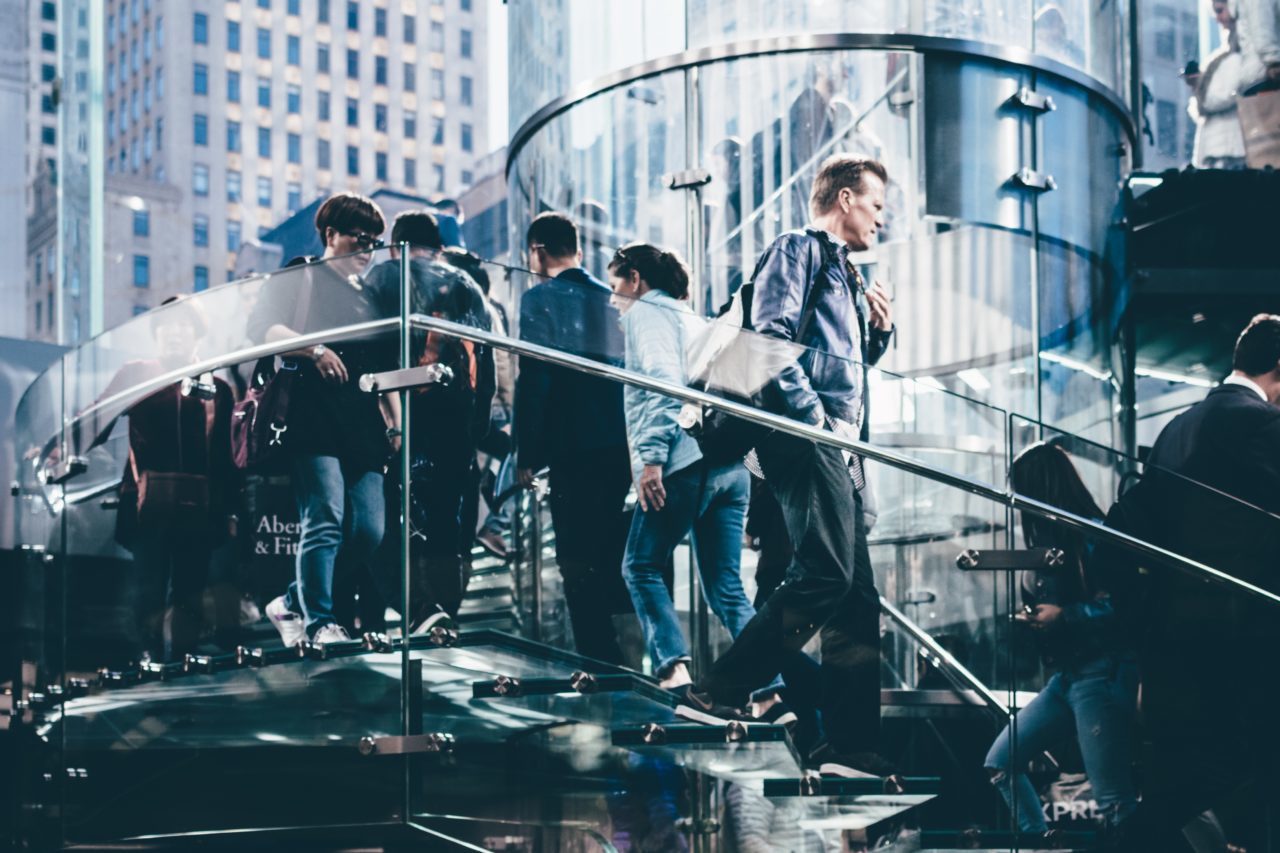Anatomy of an Apple Retail Experience
When was the last time you stepped inside an Apple store? If it was any time recently, you surely were quickly greeted by a store associate and subtly guided to a solution. You may have noticed the lack of cash wraps and the abundance of educational experiences including classes, webcasts and other forms of instruction.
All of these unusual touches are the reason that Apple has become such a retail juggernaut. Despite the lack of a “hard sell,” Apple brings in more revenue per square foot than any other retailer, according to eMarketer. So how does Apple succeed where other retailers fail? In this article, we outline the unique elements that define the unique retail experience Apple has engineered, and how you can use them in your own retail design.
Think differently
True to a company that is committed to complete disruption of, well, everything, Apple made a quite move recently to drop the word “store” from their retail presentation. Why? Because the company is spearheading a strong push for the public to see their venues as cultural hubs and “temples of the brand.” And in keeping with their austere, highly designed image, some retail outlets shoot for the visual wow factor that consumers might feel when checking out a new iPhone model. Stores incorporating unique architectural features such as amphitheaters, fountains, glass boxes and perhaps even incorporating local history (such as Apple’s new location in Washington DC, which involved a restoration of a Carnegie Library).
Create an educational atmosphere
Merely being a showroom for products has been the death-knell of retail behemoths in 2019. The savviest retail executives are transforming their retail locations into a place to sample, play and learn. Apple has long been at the forefront of this trend, ever since Steve Jobs decreed that Apple retail would have a playground feel, without high ticket items locked up behind glass. The product of all of this focus on creating an “experimental” space. Apple retail feels dynamic, lively and fast-moving, but under the surface, there is a careful choreography taking place. Which leads us to…
Write a script
Apple’s in-store interactions are actually scripted. The script that associates are trained with follows the following acronym (APPLE, naturally):
A: Approach customers with a personalized, warm welcome
P: Probe politely to understand the customer’s needs
P: Present a solution for the customer to take home today
L: Listen for and resolve issues or concerns
E: End with a fond farewell and an invitation to return
What’s worth absorbing from this approach is that designing a specific customer interaction turns the effort into a bit of a “science,” and give you a vehicle to track the overall effectiveness of your customer interactions over time.
Hire for cultural fit
As you might surmise, this customer service script is really the tip of the iceberg in regards to how Apple thinks about interactions with customers on the retail level. It’s not enough for associates to be knowledgable and friendly, they must truly embrace the company’s culture and mission on a deep level. Hiring evangelists is the goal that every well-branded company should shoot for.
Diversify the experience
How many different ways can you use an iPad? What programs does everyone need to understand on their Macs? These are questions that Apple is constantly asking itself in order to design better in store programming and also customer interactions. It’s also part of why their customer service is so effective, it feels very personalized. Spend some time thinking about your customer and how they use your product in order to better customize their in-store experience.
Invest in people
Apple pays more, trains more and retains more talent than its competitors in retail. And they do this not necessarily because they are altruists, but because they can see this investment in people pay big dividends in terms of profits.
The recent promotion of a long-time human resources VP to head of retail at Apple potentially reflects a company ready to double down on human resources.
Looking toward the future
2019 finds Apple in flux: higher priced iPhone X models did not translate into sales the company was expecting. Head of retail Angela Ahrendts, credited with spearheading Apple’s current experiential “Town Hall” model will leave in April after a five-year-long tenure. She’s going to be replaced by a 30-year veteran of the company, Deirdre O’Brien, who is currently the vice president for human resources.


